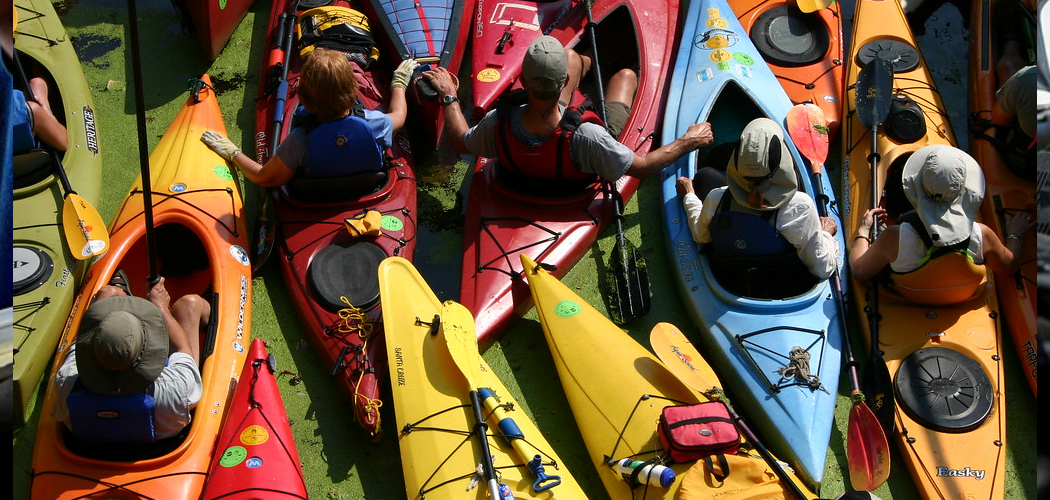When storing or transporting your kayak, securing it properly is essential to prevent theft and ensure its safety. Whether you are leaving it unattended at a dock, campsite, or on your vehicle, locking your kayak can give you peace of mind and protect your investment.
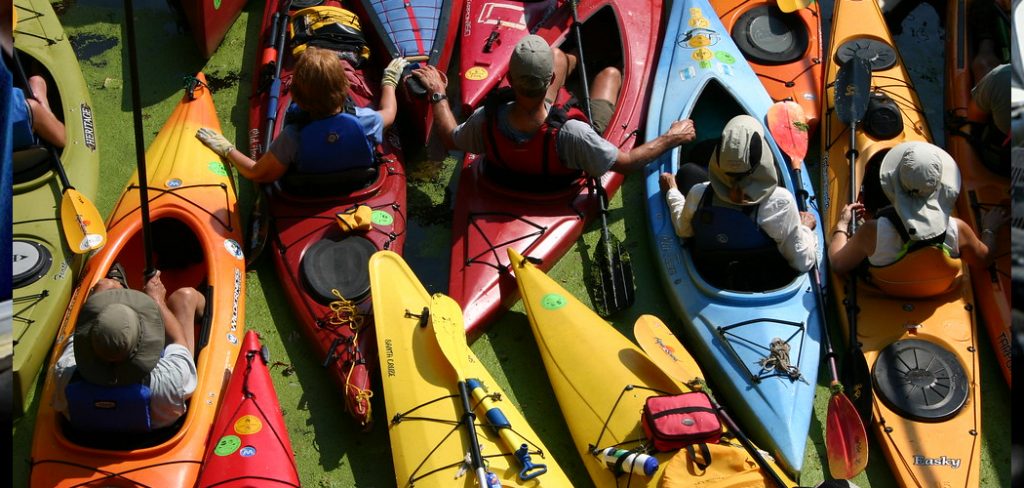
This guide on how to lock a kayak will provide practical steps and tips to help you effectively lock your kayak.
What is a Kayak Lock?
A kayak lock is a specialized security device designed to protect your kayak from theft. It typically consists of a durable cable or strap that can be looped through secure points on the kayak, such as the scupper holes, handles, or attachment points, and then locked to an immovable object like a rack or pole.
Kayak locks are made from robust materials, such as steel cables with protective coatings, to withstand cutting or tampering. These locks come in various designs, some with combination codes and others with keyed mechanisms, making them a reliable choice for safeguarding your kayak when it’s not in use.
Why is it Important to Lock a Kayak?
Kayaks are valuable items that can be easily stolen if left unsecured. They are also relatively lightweight and easy to transport, making them attractive targets for thieves. Additionally, kayaks can be expensive to replace or repair, so taking the necessary precautions to secure them is crucial.
Moreover, some kayak models come with built-in storage compartments that may contain personal belongings like wallets, phones, or keys. By locking your kayak, you not only protect the kayak itself but also any valuable items stored inside.
Needed Materials
To effectively lock your kayak, you will need the following materials:
A Durable Kayak Lock:
As mentioned above, choose a sturdy lock made from strong materials to deter theft attempts. Consider the type of lock that best suits your needs, whether it’s a combination or a keyed lock.
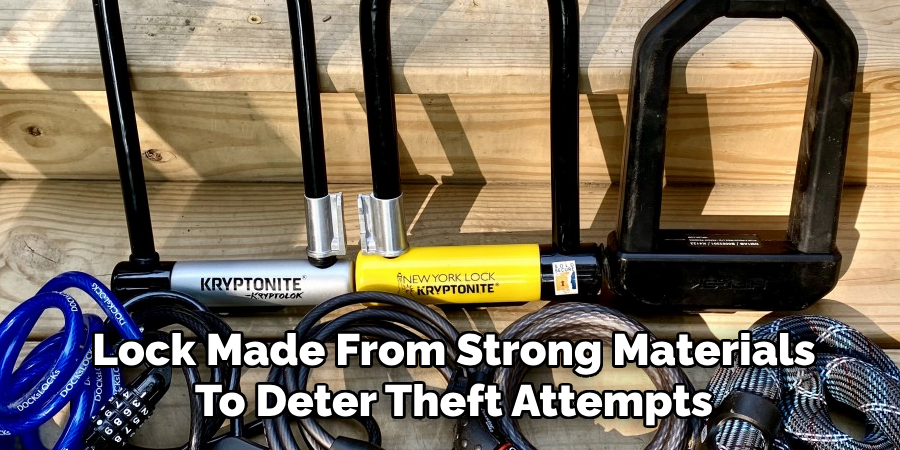
A Cable or Strap:
The length of the cable or strap should be long enough to loop through secure points on the kayak and attach to an immovable object. It also needs to be strong and resistant to cutting.
An Immovable Object:
This can be a bike rack, pole, tree, or any other fixed structure that is sturdy enough to hold the weight of your kayak and cannot be easily moved.
8 Easy Steps on How to Lock a Kayak
Step 1: Determine Your Kayak’s Secure Points
Start by identifying the secure points on your kayak that can be used to attach the lock. Common secure points include scupper holes, grab handles or dedicated attachment loops. Ensure that the points you choose are sturdy enough to withstand attempts at tampering or cutting.
If your kayak lacks obvious locking points, consider using a locking system that wraps around the body of the kayak to keep it secure. Taking the time to evaluate your kayak’s design will help you select the best locations for attaching the lock.
Step 2: Thread the Cable or Strap Through the Secure Points
Once you have identified the secure points on your kayak, take the cable or strap and thread it through these points. Pass the cable through features like the scupper holes, grab handles or any attachment loops you selected in Step 1. Ensure the cable is tight and properly anchored to prevent it from being easily removed.
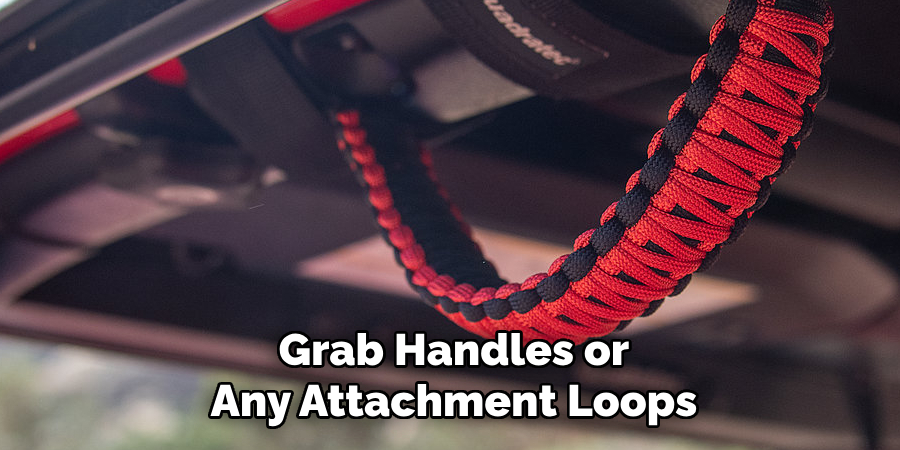
For kayaks without designated locking points, wrap the cable securely around the body of the kayak. This step is critical for creating a secure connection between the kayak and the lock, so take your time to thread the cable correctly.
Step 3: Determine the Length of Cable Needed
After threading the cable or strap through the secure points, measure and adjust its length to ensure it can reach an immovable object. If your kayak is longer than your cable or strap, consider using multiple locks to cover the entire length.
But be careful not to leave any slack in the cable as this can make it easier for thieves to cut or remove it.
Step 4: Loop the Cable Around the Immovable Object
Once you have determined the required length of your cable, loop it around an immovable object like a bike rack or a pole. Ensure that the object is sturdy enough and cannot be easily removed or tampered with.
If no immovable objects are available, consider using another kayak as an anchor point if possible.
Step 5: Check for Any Weak Points
Before locking your kayak, do a thorough check for any weak points where someone could potentially cut or remove the lock. These may include exposed cables or damaged secure points.
If you discover any weak points, reinforce them with additional cable or find a more secure attachment point.
Step 6: Secure the Lock
Once you are satisfied that your kayak is properly secured, use the lock mechanism to securely fasten the cable to itself, creating a loop around the immovable object and your kayak. Ensure that the lock is properly engaged and cannot be easily removed.
It’s a good idea to double-check that the lock is secure before leaving your kayak unattended.
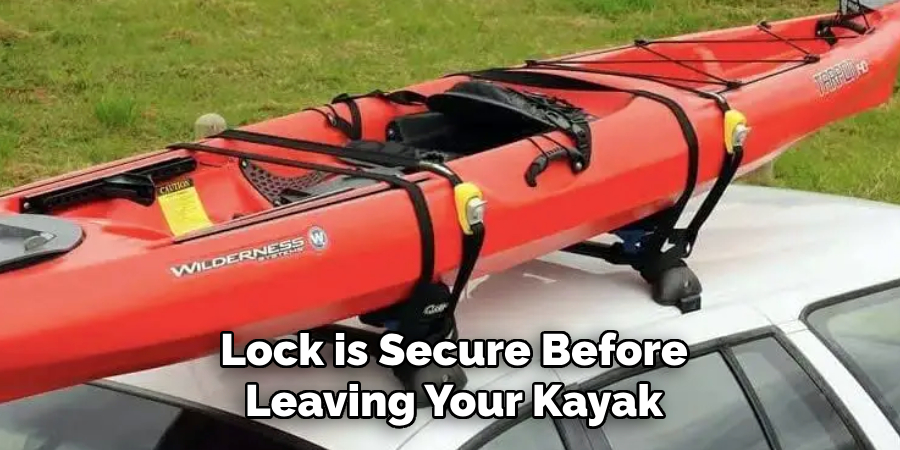
Step 7: Consider Covering Your Kayak
To provide an additional layer of security, consider covering your kayak with a sturdy tarp or kayak cover. A cover can serve two purposes—deterrence and protection. By concealing your kayak, it becomes less visible and less likely to catch the attention of potential thieves.
Additionally, a cover protects your kayak from exposure to the elements, such as rain, sun, or debris, which can cause wear and tear over time. Make sure the cover is secured tightly and cannot be easily removed, as this will further ensure the safety of your kayak.
Step 8: Keep Your Lock Combination or Key Safe
Whether you are using a combination or keyed lock, it’s essential to keep your lock access code or key in a secure location. Choose a spot that is easily accessible to you but not obvious to potential thieves. For example, avoid leaving your key or code in an unlocked car nearby. Storing it on your person, such as in a waterproof pouch around your neck, is recommended.
Following these steps on how to lock a kayak and taking the necessary precautions will greatly reduce the risk of your kayak being stolen. With a secure lock, you can rest easy knowing that your valuable kayak and personal belongings are safe while you enjoy your time on the water. Remember to always be vigilant and mindful of potential threats, but don’t let the fear of theft deter you from experiencing the joy and freedom of kayaking. Happy paddling!
Additional Tips for Kayak Security
- Consider installing a GPS tracking device on your kayak to aid in its recovery if it does get stolen.
- Avoid leaving valuable items, such as electronics or wallets, in plain sight on your kayak. Keep them hidden in a secure compartment or take them with you.
- If possible, park your car close to where you plan to launch your kayak so that it’s within your line of sight while on the water.
- Invest in a lock specifically designed for kayaks and other outdoor gear, as they are often more durable and effective than generic locks.
- Remember to check local regulations regarding locking up kayaks or any other equipment before leaving it unattended.
- Consider joining an online community or group dedicated to kayaking safety and sharing tips and advice with fellow paddlers about securing their kayaks. Together, we can all help prevent kayak theft and protect our beloved watercraft.
Frequently Asked Questions
Q: Can I Use a Bike Lock to Secure My Kayak?
A: While it’s possible to use a bike lock on your kayak, it’s not recommended. Bike locks are often not long enough to properly secure a kayak and are not specifically designed to withstand water and outdoor elements. It’s best to invest in a lock specifically designed for kayaks or other outdoor gear.
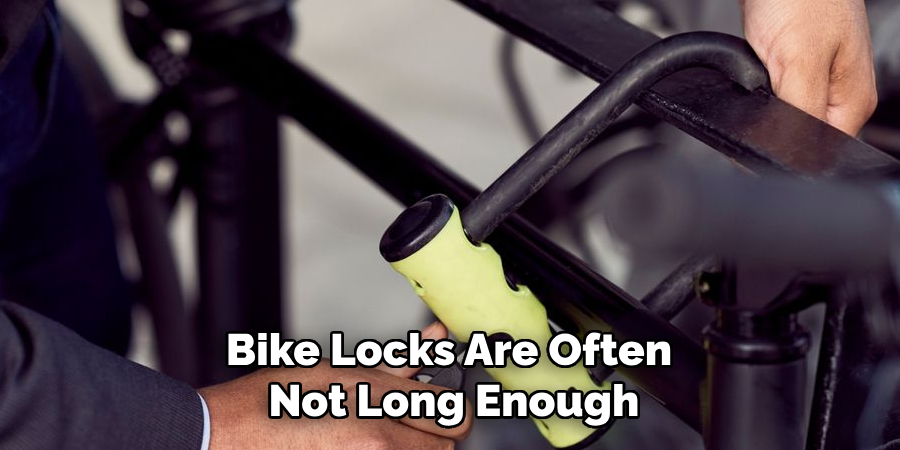
Q: Is There a Way to Secure My Kayak Without a Lock?
A: If you are unable to use a lock, consider using multiple cables or straps wrapped around your kayak and secured to an immovable object. This is not as secure as using a lock, but it can still act as a deterrent and make it more difficult for thieves to steal your kayak.
Q: What Should I Do if My Kayak Gets Stolen?
A: In the unfortunate event that your kayak does get stolen, report it immediately to the local authorities and provide them with any information or evidence you may have, such as photos or a description of the kayak. Additionally, notify your insurance company if your kayak is covered under a policy.
Conclusion
Locking your kayak is an important step in preventing theft and protecting your valuable investment. By following these easy steps and taking the necessary precautions on how to lock a kayak, you can ensure that your kayak stays safe and secure when not in use.
Remember to always be aware of your surroundings and take extra measures, such as installing a GPS tracking device or joining a kayaking safety community, to further safeguard your kayak. Enjoy peace of mind knowing that your kayak is safely locked up and ready for your next adventure on the water. Happy paddling!

